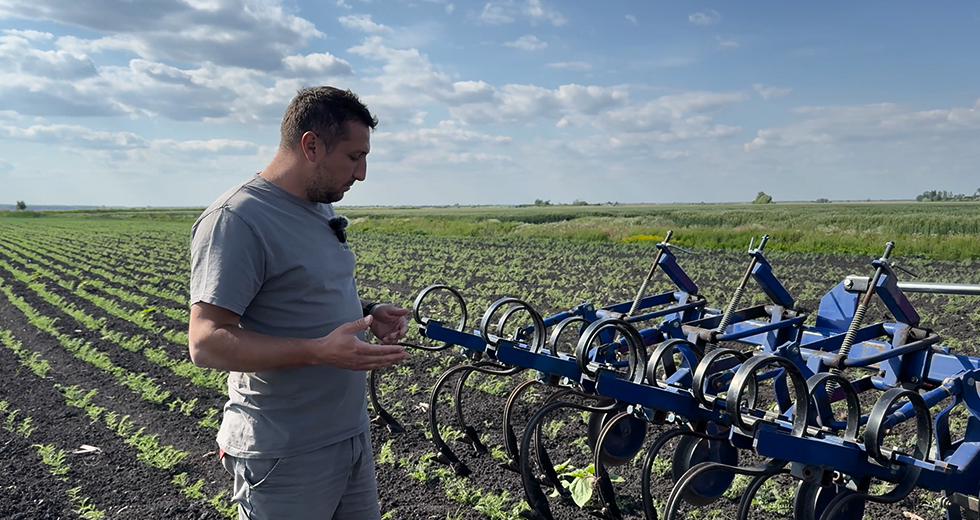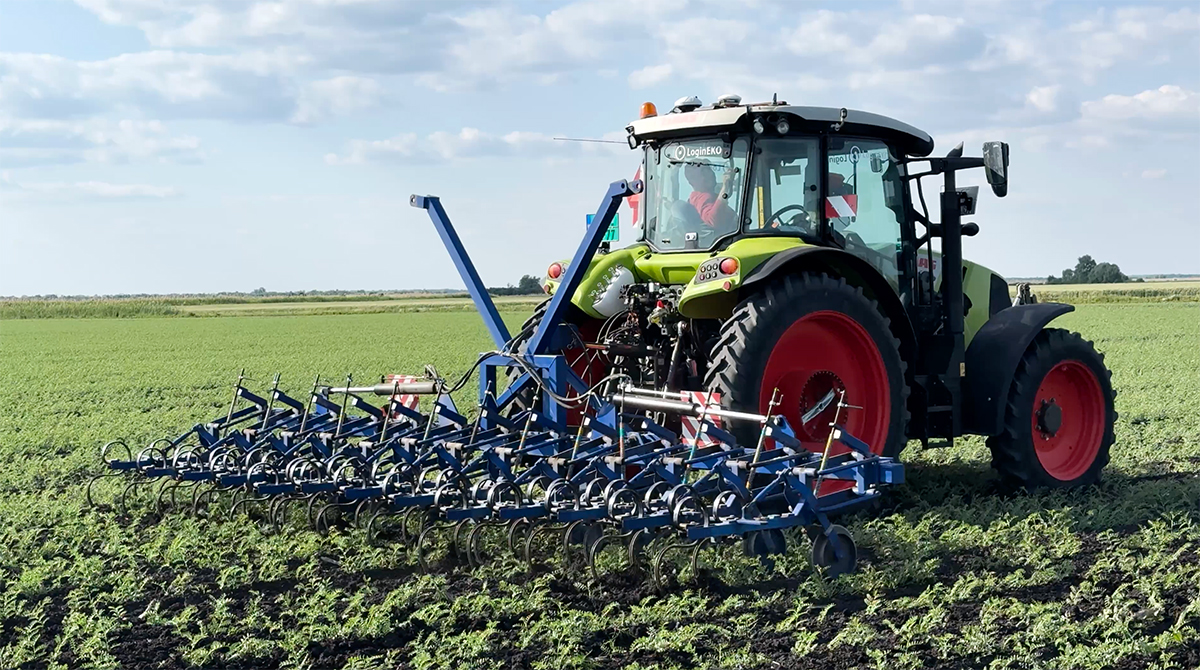Discussing Soil Health at the Soil ReUnion Congress 2025
October 29, 2025Over 200 experts met in Serbia to share new ways to restore soil health. Here’s what we learned and why healthy soil matters for us all.
Read articleWe’re back in the field with our chickpea cultivation series! See how we tackle weeds after emergence using inter-row cultivation.

If you caught the first part of our chickpea series on seedbed preparation and sowing, you already know that growing chickpeas organically takes planning and precision. Now, in part two, we’re diving into weed control after emergence and inter-row cultivation.
Join us in Novi Kneževac and watch the full video to see how we do it in action.
Chickpeas are sensitive to weed competition. They don’t close rows like soybeans or grow tall and broad like sunflowers. Without regular intervention, weeds can easily take over.
In this field:
With Rotarystar, it’s not about eliminating every weed. One pass typically removes 20-30% of weeds and pulls out small weeds, loosens the soil and supports chickpeas in outcompeting weeds.

Then it’s time for inter-row cultivation with the Tupanjac cultivator.
We’re using a 6-meter-wide Tupanjac cultivator set to 50 cm row spacing. In terms of weeds, we’re targeting foxtail, volunteer sunflower, citron melon, and Canada thistle.

The first inter-row cultivation is one of the most important operations in organic chickpea farming. What’s key is matching the depth of the cultivator speed to get the best effect, which will carry over to the next inter-row cultivation and the rest of the growing season.
After that, we continue monitoring weed pressure and adjusting interventions as needed. Every field is different, and in organic farming, there’s no one-size-fits-all.
Missed the first part? See how we do seedbed preparation and manage early weed control. And stay tuned for our harvest plans for chickpeas.
Over 200 experts met in Serbia to share new ways to restore soil health. Here’s what we learned and why healthy soil matters for us all.
Read articleThe Plant Food Summit 2025 brought together Europe’s food system leaders to discuss how plant-based innovation can drive a healthier, more resilient, and future-proof food system. Here’s how they’re turning ambition into action.
Read articleThe updated EAT-Lancet report calls for urgent transformation of the global food system. Here’s what we learned at the launch and how our work supports this change.
Read article